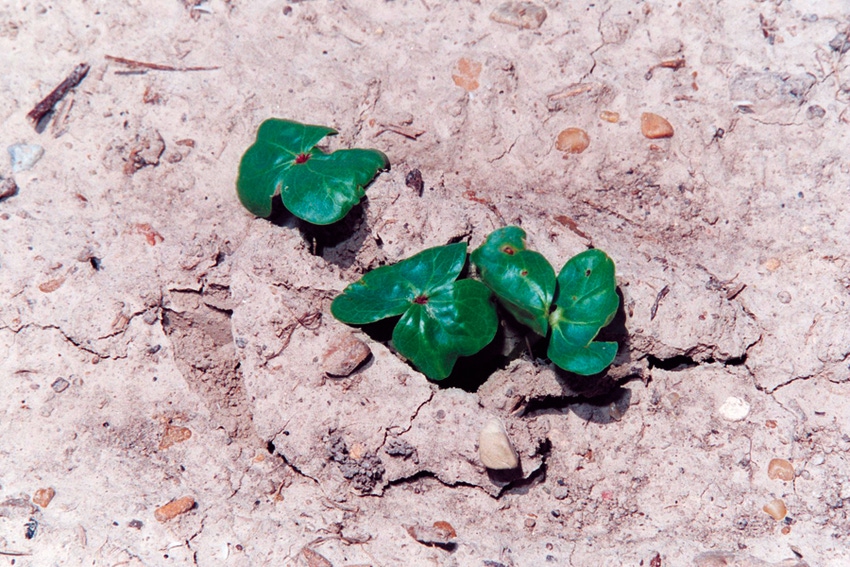
When evaluating your current cotton stand, make sure to check the health of the plant both above ground and especially below ground. The plants can look pretty ragged and still survive as long as the root system is healthy. In fields with questionable stands, you must consider several things before making a replant decision.
May 5, 2011

Seedling cotton is very sensitive to excessive rainfall or flooding. Heavy rainfall in the spring cools the soil, reduces soil oxygen content, and increases the pressure from seedling disease pathogens.
Waterlogged conditions for 24 to 36 hours will lead to anaerobic conditions where the constant supply of oxygen to the young root system will be cut off. After 36 hours of waterlogged conditions young roots may die, eventually leading to the death of seedling plants.
Most cotton is grown on soils that are well-drained and prevent constant saturation of water. However, given the sequence of events the last few days, most producers will have some replanting to do once fields begin to dry.
I have prepared a checklist for replanting cotton below. When evaluating your current stand, make sure to check the health of the plant both above ground and especially below ground. The plants can look pretty ragged and still survive as long as the root system is healthy.
In fields with questionable stands, you must consider several things before making a replant decision.
1. What is the calendar date?
2. What is the population of plants that will survive?
3. What is the health of those plants, especially their roots?
4. Is seedling disease present?
5. What is the population uniformity, are there large skips and frequent skips?
6. What is the productive capability of the soil, and is the field irrigated?
7. How much yield potential will be lost by replanting?
A big consideration is soil type and moisture. If the soil type is one that dries quickly, replanting decisions must be made ASAP and carried out before moisture falls out of the beds, lately this hasn’t been an issue.
If plant distribution is fairly uniform in fields on productive soils, good yields can be made with low plant populations, perhaps in the low 20,000 plants per acre range, or as low as 1.5 plants per row-foot with no or few skips. If the stands are broken with numerous skips, replanting is in order at populations below 30,000 plants per acre, depending on the size and frequency of skips.
Data from the Mid-South and Southeast suggests that if you have 10 to 13 skips that are 3 feet or longer in 80 feet of row, then a replant will be justified. In some cases a grower may “spot-in” areas of the field with his planter, however in many situations spot planting is not recommended because late-season management will be more difficult.
Calendar date is significant; a stand you would plow up on May 1 would probably be kept on May 25.
Variety selection is also important when replanting. It is not a good idea to plant a full-season variety if the replanting date is past May 15. An early-maturing variety will do better when the season is shortened because of a late planting date.
If replanting is necessary, continue to use insecticides and fungicides, especially if the first stand died from seedling disease. Use a burn-down herbicide to kill the old stand of cotton and any weeds that may have emerged on the row.
Always remember, “If you have enough cotton left to make the decision difficult, you probably have enough to keep.” After the current flooded conditions, it will take some time for the stands to recover. Seedlings may look yellow and off color, but as the soil dries oxygen will return to the roots and plants should begin to green back up.
You May Also Like



